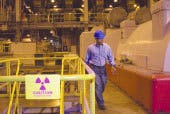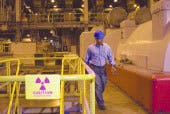New safety training program on radiation
“Radiation: The Basics” is a new safety training program that provides information about radiation to those who work with it or are in its vicinity.
The program is available on DVD and video.
The program explains the types of radiation, the biological effects of radiation exposure, and the dosage data. It provides information on the proper handling of radioactive materials, safe work practices, and emergency procedures to prepare employees who work with radiation for any situation they encounter.
The instructive primer is designed to help viewers understand the dangers of radiation, how to avoid exposure, and deal with emergency situations.
Source: Coastal Training Technologies Corp., 500 Studio Drive, Virginia Beach, VA 23452.
New chip enables smaller geophysical instruments
The new CS5373A seismic IC integrates the features and performance from two discrete seismic chips in one IC allowing designers to implement smaller and lighter seismic acquisitions systems. The CS5373A provides designers with the ability to create smaller high-performance low-power consumption geophysical instruments.
Utilizing high-precision fourth-order 24-bit Delta Sigma technology, the CS5373A is an integration of this firm’s CS4373A Seismic Test DAC and CS5371 Delta Sigma modulator. The on-chip modulator offers low-noise characteristics, 127 db at 215 hz bandwidth (2 ms sample rate), and -118 db total harmonic distortion. Selectable attenuation and programmable test modes of the on-chip seismic test DAC help suit this device for testing the sensor and electronics channel of single sensor seismic acquisition systems and high performance geophysical instruments. Test DAC distortion performance (THD) of the precision output is typically -118 db and -100 db (THD) for the buffered output.
Source: Cirrus Logic Inc., 2901 Via Fortuna, Austin, TX 78746.




